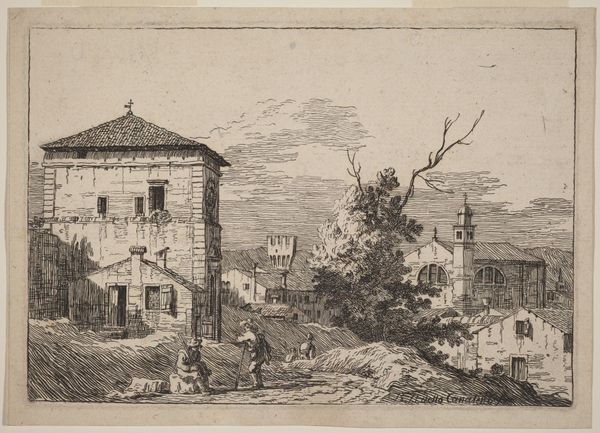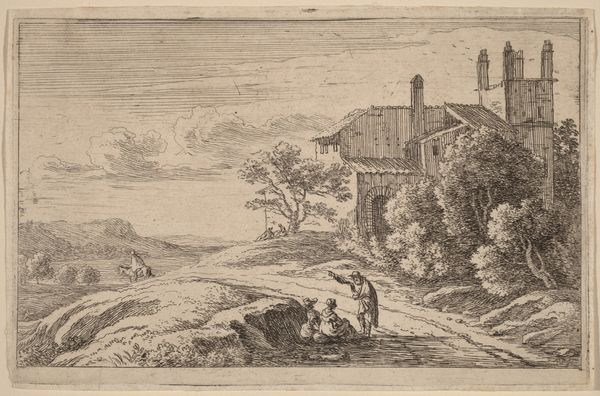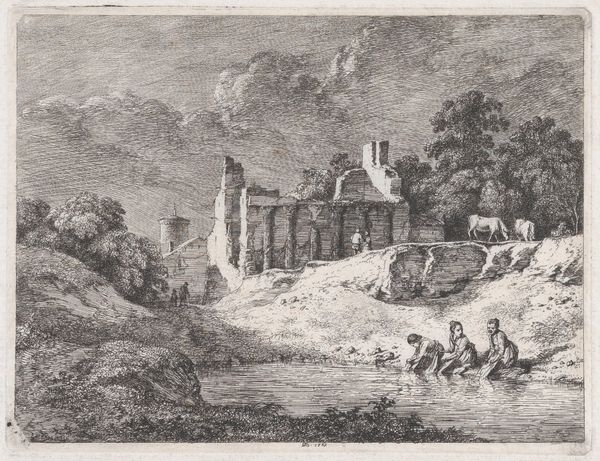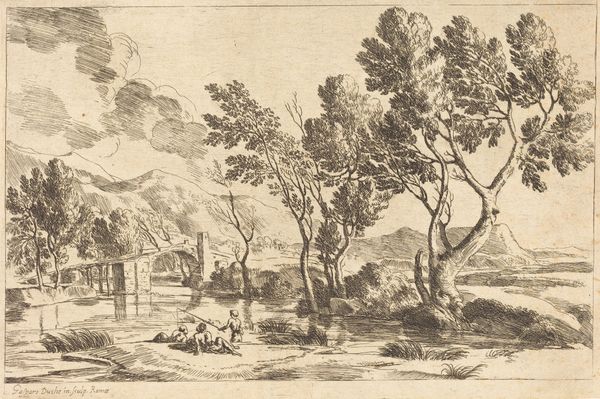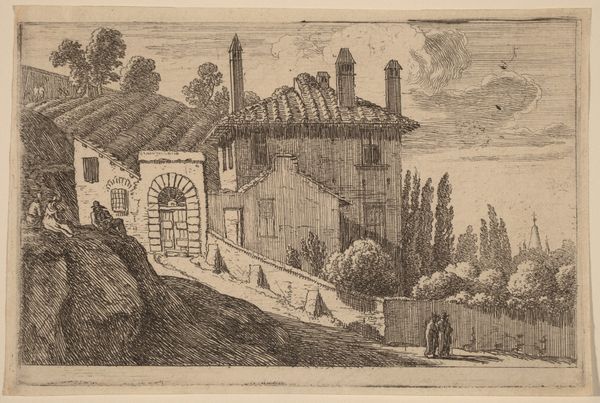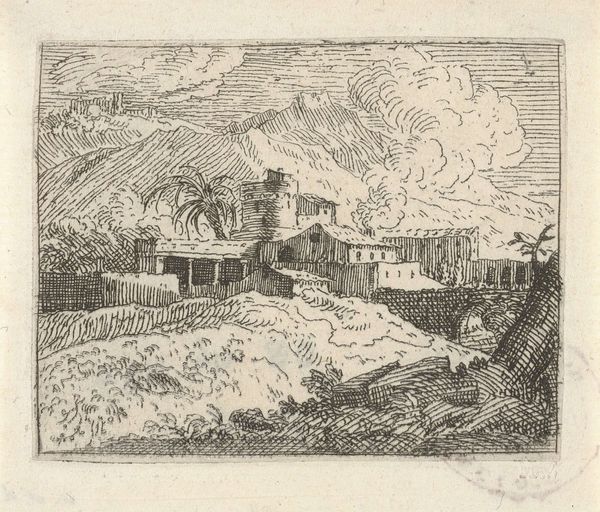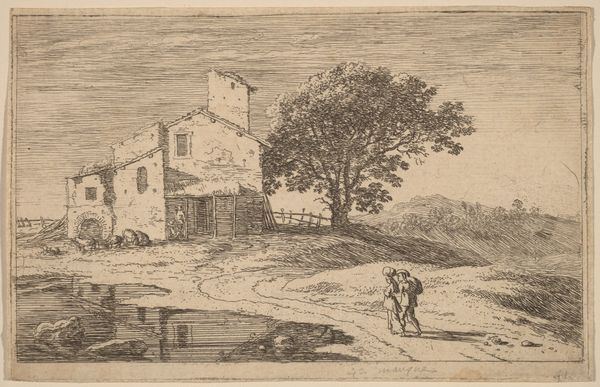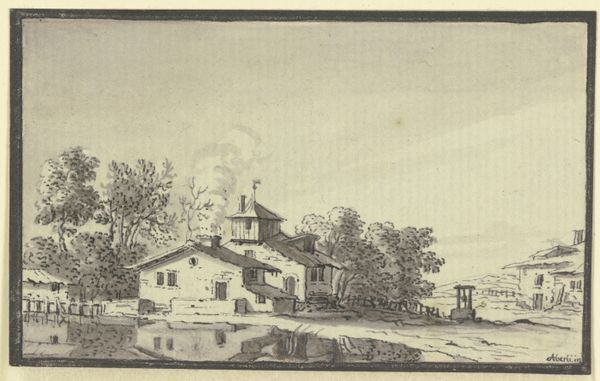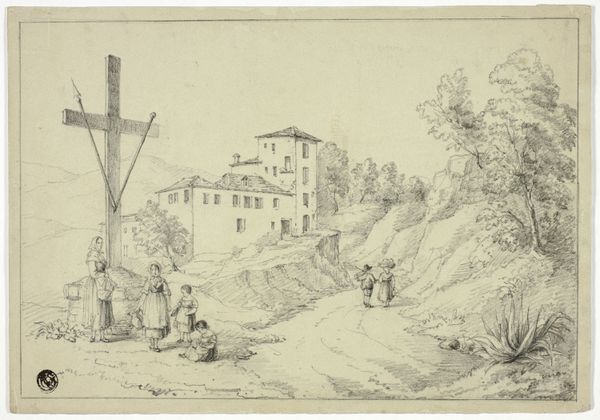
print, etching
#
baroque
# print
#
etching
#
landscape
Copyright: National Gallery of Art: CC0 1.0
Herman van Swanevelt made this etching, "Round Tower near the Tiber," sometime in the mid-17th century. Etching is an intaglio printmaking method, where a metal plate, usually copper or zinc, is coated with a waxy, acid-resistant substance called a ground. The artist then scratches an image into the ground with a pointed tool, exposing the metal. The plate is then immersed in acid, which bites into the exposed lines, creating grooves. The remaining ground is removed, and the plate is inked. Finally, the plate is pressed onto paper. The linear quality and fine details in "Round Tower near the Tiber" highlight the nature of the etched line. The precision in the landscape creates a sense of depth and texture, drawing the viewer into the scene. Van Swanevelt's choice of etching allowed him to create multiple copies, making art more accessible. This reflects a shift towards a broader market for art, tying directly into the evolving economic structures of the time. The detailed and meticulous process also speaks to the value placed on craftsmanship and skill. This piece challenges traditional hierarchies of art and craft, as it blends artistic vision with technical expertise.
Comments
No comments
Be the first to comment and join the conversation on the ultimate creative platform.
